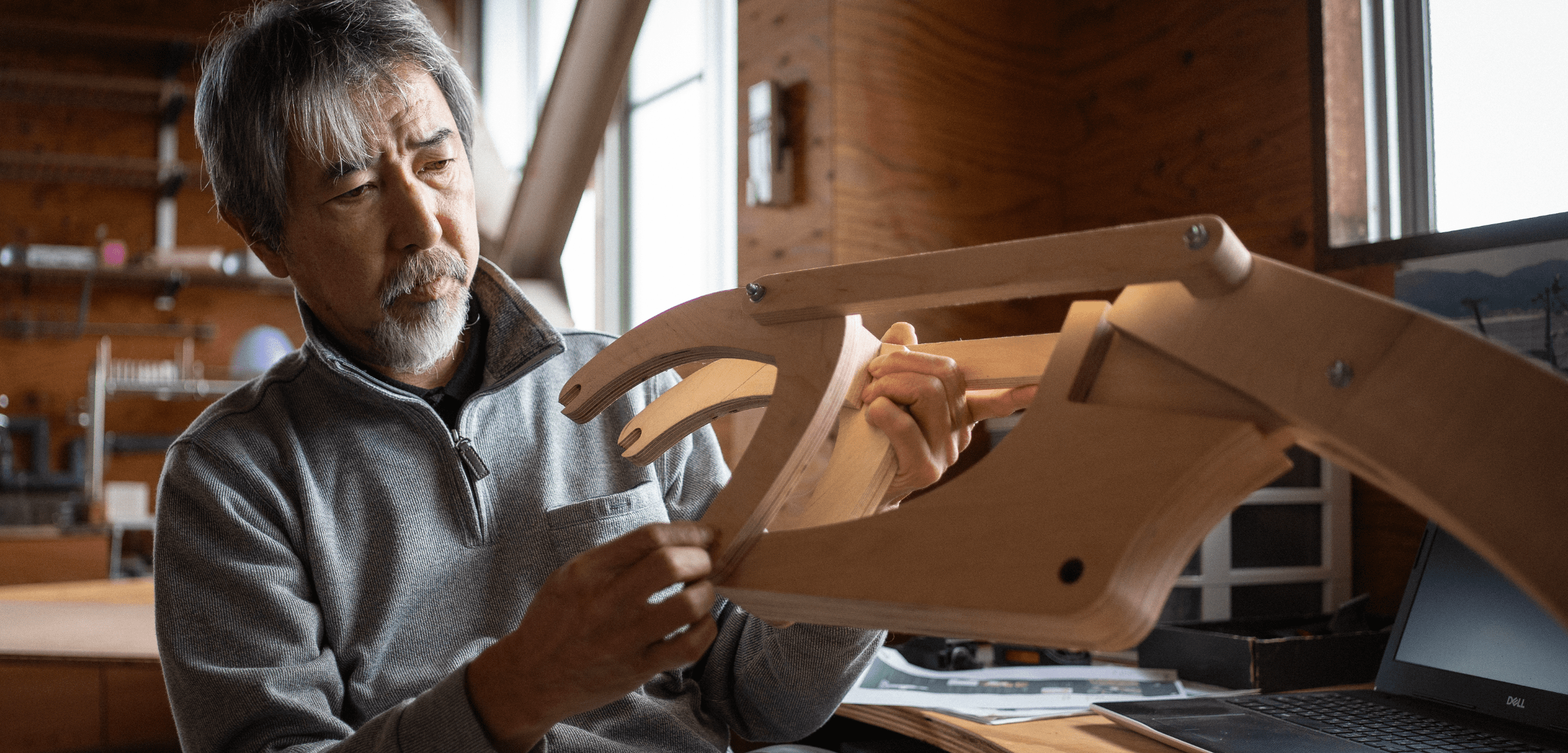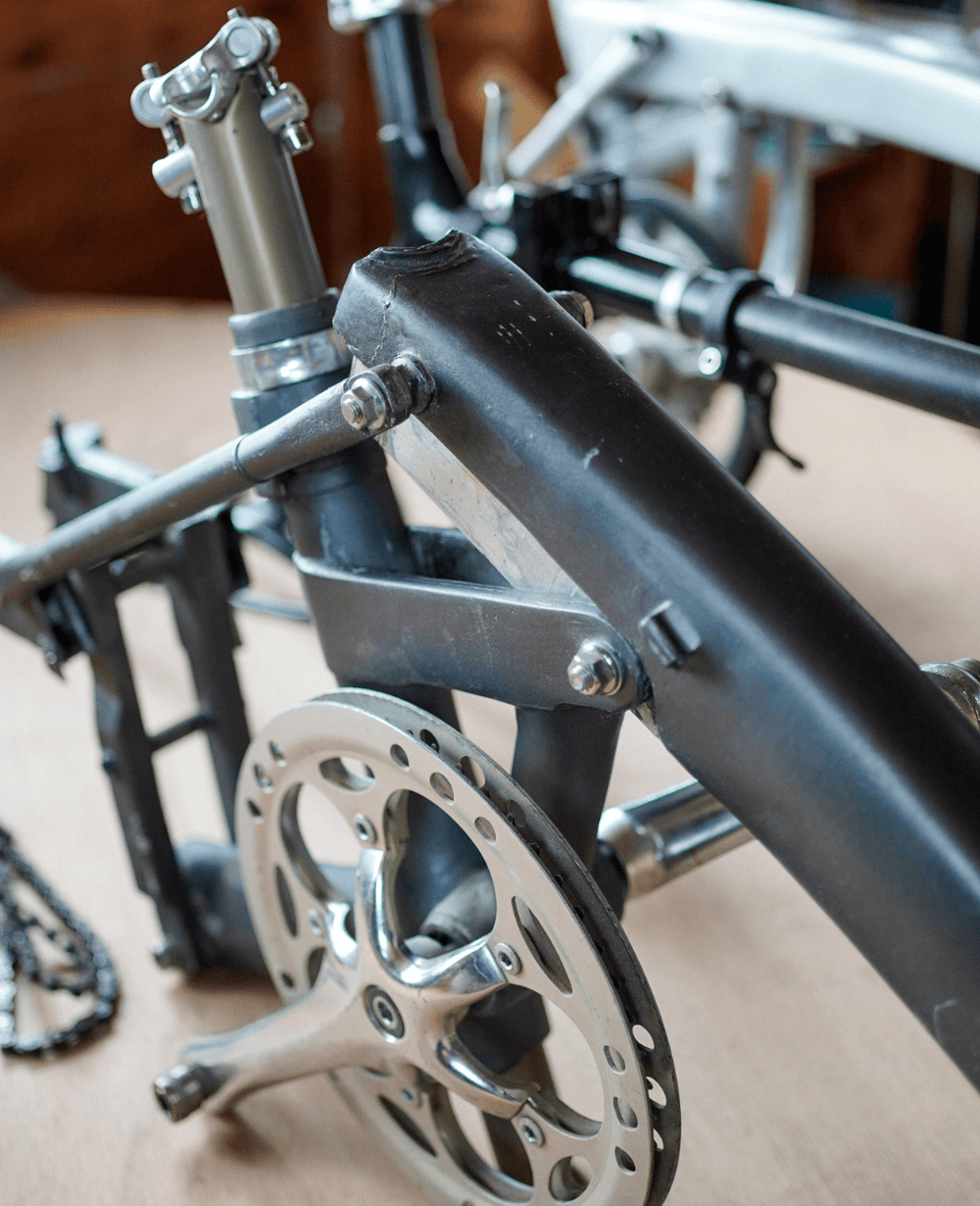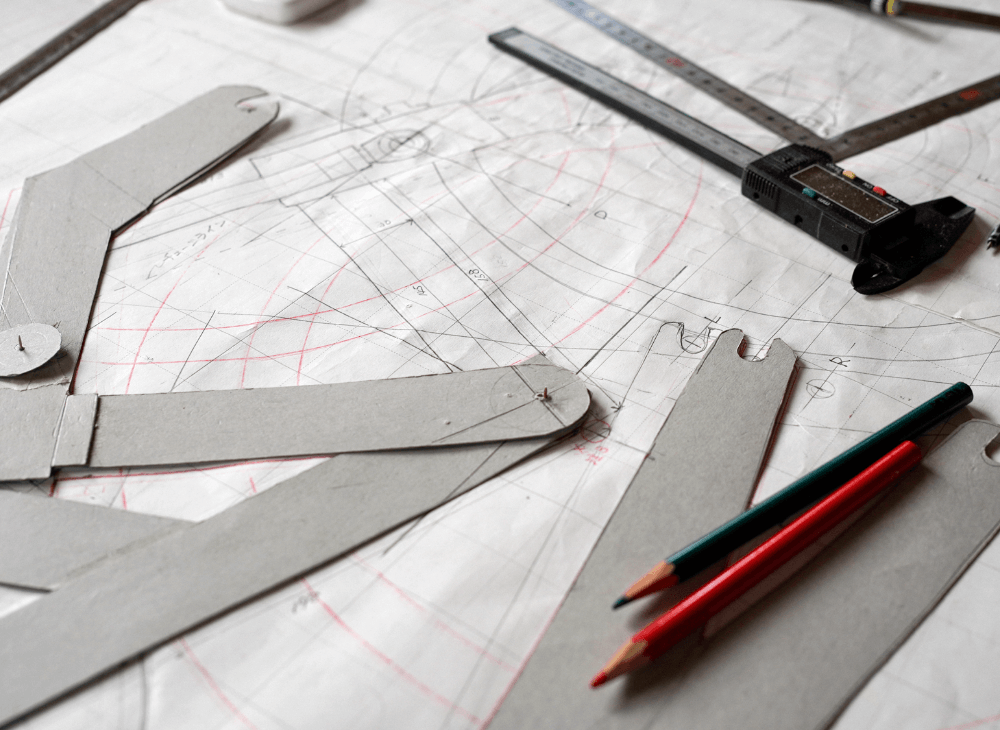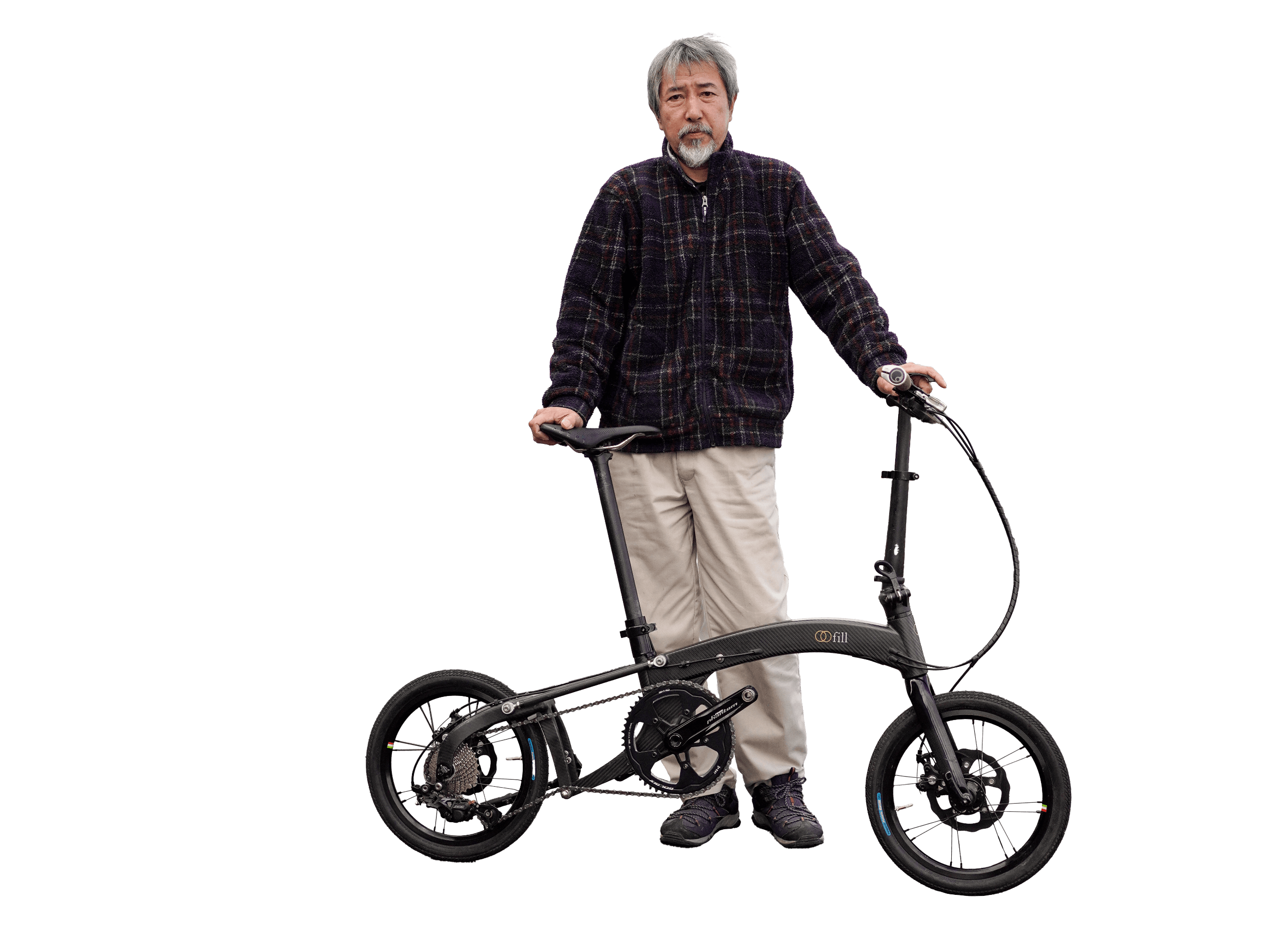Folding Bike
STORY Making / How fill was created

Focuses on functional beauty and folding mechanism.
The world's smallest folding bike, 20 cm wide.
Yutaka Sugawara / the inventor of the fill
Lives and works in Miyagi Prefecture. Graduated from the Sculpture Department of Tokyo Zokei University. Studied the basics of fine arts/sculpture under sculptor Tadayoshi Sato, also known as the artist who created the illustrations for the picture book 'The Big Turnip'. After graduating, became an art teacher and worked at a junior high school.
For a time he was seconded to the The Miyagi Museum of Art, and at the same time he worked his way up to the position of headmaster at a junior high school. During this time, he continued to create sculptures and exhibited his work every year. The Great East Japan Earthquake that hit his home town changed his life, as he had been involved in art and education for a long time and had nothing to do with the development of bicycles. Fascinated by the possibilities of bicycles, he stepped back into the field of manufacturing.



How an art teacher turned back
to the path of the inventor.
11.3.2011 Great East Japan Earthquake. There were long queues at petrol stations every day.
Sugawara, who was on secondment at the Miyagi Museum of Art at the time, was forced to commute to work by bicycle. At first, he started commuting to work on a so-called ‘mama-chari’, a light bicycle. However, he realised that the three-hour round-trip commute by bicycle was too strenuous for him and bought a sports bicycle.
Riding that bike reduced his commuting time to two hours. He was fascinated by the possibilities of bicycle travel.
Soon after, the trains that had been suspended since the disaster resumed. Despite this, Sugawara's interest in cycling continued.
He wondered: 'Couldn't I cycle further and more freely to different places by using public transport?
He turned his attention to folding bicycles that he could take on trains.
Sugawara learned about the size of a famous folding bicycle, which at the time was said to be the smallest in the world.
He began to draw a pencil and paper sketch of what he considered to be the ideal folding bicycle, wondering if a more compact folding bicycle could be made.
After graduating from art school, she immersed herself in her creative work with the aim of becoming a sculptor.
The passion for making things was rekindled.
Sculpture and bicycles.
These two seemingly unrelated things had one thing in common: "to develop a concept by capturing movement and form from a 3D perspective" and "to strive for a more beautiful form that is still functional".
Sugawara has studied sculpture and as an art teacher, has dealt with three-dimensional modelling on a daily basis. He puts his many years of experience and sensitivity to use in the creation of prototype bikes.
The challenge to set a world record for folding width.
Prototype No.1, the origin of fill.
In the autumn of 2011, the first prototype was assembled.
The plans were drawn by hand. A model was made from a paper pattern, and the folding process was checked in detail as it moved.
Existing or discarded bicycles were disassembled and each part was filed down, welded and assembled after repeated adjustments to the nearest centimetre or millimetre.
Sugawara was never satisfied and continued to pursue his ideal folding bicycle.
The number of prototypes he continued to make amounted to 11.
These prototypes were all handmade by Sugawara himself, from design to assembly.
In 2020, more than a decade has passed since the development of the first prototype.
The 12th prototype achieves the world's smallest folding bicycle with a width of 20 cm.
fill's unique folding method is granted a patent.
The fill, Sugawara's ideal folding bike, was finally born.


Page Top